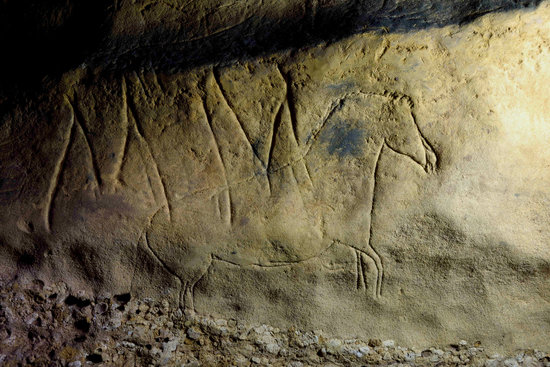Paleolithic sanctuary around 15,000 years old discovered in southern Catalonia
The site consists of more than 100 engravings, the oldest example of prehistoric art in Catalonia

A Paleolithic sanctuary around 15,000 years old and consisting of more than 100 engravings has been discovered in the town of L'Espluga de Francolí in southern Catalonia. They are the oldest examples of prehistoric art ever discovered in Catalonia.
The find, described as 'unprecedented' and 'exceptional' was made last October and announced on Friday.
Discovery
A few days after flooding on October 22 a team of researchers started a new expedition in the Font Major cave to assess its archeological potential. "We made a fortuitous, extraordinary and unexpected discovery. It was something we were not looking for," said Josep Maria Vergès, part of the discovery team and director of the research project on the Font Major cave.
Vergès went on to say that the the sanctuary may have been even bigger, but that some engravings had in fact been erased by human activity. Before becoming a protected area, that part of the cave had been a busy spot on adventure routes. Many visitors, unaware of the existence of the engravings had touched the walls and even drawn graffiti.
Engravings
Forty of the engravings found are representations of animals - such as deer, horses and oxen - and the rest are abstract signs and symbols. Experts have dated them to the Upper Paleolithic period, especially the Magdalenian period, although some may be slightly older, while others date from the more recent Neolithic period.
3D scans
The shrine cannot be visited due to its small size, difficult access, and fragility, but 3D scans of the site have been made and work is ongoing to document high-resolution images of the engravings. This will allow not only scientific analysis, but also give visitors to the site the opportunity to view a projection of the sanctuary in 3D.
Significance
The sanctuary is a landmark discovery in Catalan archeology, particularly due to the number and quality of engravings found. "In the context of Catalonia and the north-east of the peninsula it is exceptional, there’s nothing like it," said Vergès.
The government announced it will declare the cave a Cultural Asset of National Interest (BCIN in Catalan).